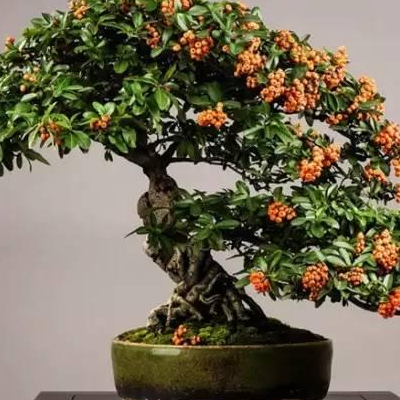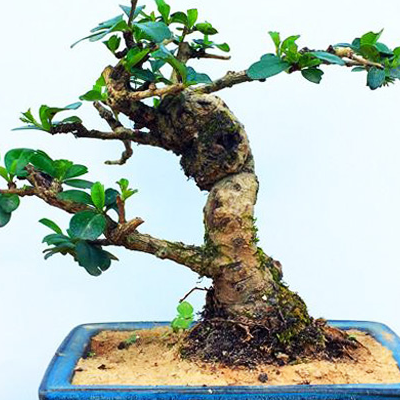What is the difference between the culture method of dwarf asparagus and asparagus
Asparagus, this is a lot of people like farming, is such a popular, there is a kind of asparagus called short asparagus? What is the culture method of dwarf asparagus? What are the differences between dwarf asparagus and asparagus:

Culture methods of dwarf asparagus:
(1) characteristics of Phyllostachys pubescens
If you want to correctly grasp the culture method of dwarf asparagus, the first step is to understand the characteristics of dwarf asparagus. According to the growth characteristics of this plant, creating a suitable growth environment for it is helpful to promote the healthy growth of asparagus. Asparagus is a kind of wet plant, in addition, it also likes warm, well-lit and well-ventilated environment. Therefore, placing asparagus in such an environment can ensure that they will not be adversely affected by natural conditions.
(2) soil
According to the above characteristics, the growth soil of Phyllostachys pubescens should be moist but with good drainage conditions, which can not only provide sufficient water, but also effectively avoid the problem of rotting roots. The soil can be cultivated in a certain proportion, such as peat soil, perlite, pastoral soil, rotten leaf soil and so on. Note that the flowerpot of asparagus should not be too large or too small, and it is better to choose according to the size of the plant.
(3) Light
Asparagus will grow better in sufficient light, but it should not be exposed to the sun for a long time, otherwise it will cause the branches and leaves to yellowing and even withering. The condition of light is that there is enough sunlight, but it is not in direct contact with the sun, and it is best to be in a semi-overcast state.
(3) watering
The potted soil of asparagus can help us understand its water shortage, so we want to know whether it needs watering by observing the dryness of the soil. Generally speaking, if there is no moisture on the soil surface, or even dry and cracked, it is necessary to replenish the plant in time. If the soil surface is still wet, no more watering is needed. The frequency of watering should be determined according to the specific situation, in order to follow the law of the growth of asparagus.
(4) fertilization
The fertilization method of dwarf asparagus is to apply thin fertilizer frequently, and each fertilization should not be excessive or too thick, which will lead to plant death. Fertilizer is usually dominated by nitrogen fertilizer.
The difference between short asparagus and asparagus:
Introduction of short asparagus:
Phyllostachys pubescens is characterized by fine and short leafy branches and no trailing, so it has higher ornamental value as a family culture. Large asparagus, stems and leaves at the beginning of tufted, leafy stems grow very long, irregular growth, need for pruning and strapping.
Introduction to asparagus:
The cultivated varieties of asparagus include large asparagus and dwarf asparagus. Dwarf asparagus, also known as "cloud bamboo" and "asparagus ball", is called "Tangshan asparagus" because its needles are dense and pine like bamboo, and Gu has the nickname of "Yunsong bamboo". Different from the ordinary asparagus, its leaves are very thick, the stems are very stout, the needles are dense together and look like pine, and because its stem has a bamboo-like structure, it looks like bamboo, so it is a rare precious variety. The effect used to make bonsai is very elegant and beautiful!
The breeding method of dwarf asparagus is introduced here, pay attention to master the difference between dwarf asparagus and asparagus, the growth is a little different.
How to raise Phyllostachys pubescens, culture methods and matters needing attention / like semi-shade environment
Dwarf asparagus, a variety of asparagus, just like its name, the plant is very short, but it has a beautiful tree shape and bright green color, so it is very ornamental indoors. In life, many people want to raise short asparagus, how to raise it? The following are the breeding methods and matters needing attention of the dwarf asparagus arranged by the editor, which are very detailed. Friends who want to raise them must take a look at them.
First, how to raise dwarf asparagus and understand its habits
Phyllostachys pubescens likes a warm, humid and well-lit environment. It avoids strong light and is not resistant to high temperature. When breeding indoors, it should be placed in a ventilated semi-shady place and warm measures should be taken in winter. As for cultivated soil, it is best to choose loose and fertile soil with good drainage. So how to raise dwarf asparagus? Just satisfy its growth habits.
2. culture methods and matters needing attention of dwarf asparagus
1. Soil
How to raise dwarf bamboos, we should first re-choose potted soil. Because many flower friends' short asparagus bonsai are existing potted plants bought by florists or online, normal maintenance can ensure plant growth. But the soil is relatively cheap, if you want the short bamboo to grow well, you'd better choose again.
Soil selection: according to the growth habits of asparagus, it likes loose and well-drained soil. In this regard, the editor recommends that everyone use: peat soil, perlite, pastoral soil, rotten leaf soil and other soil mixed according to a certain proportion of the soil.
Note: the flowerpot for dwarf asparagus should not be too large, otherwise it will cause water shortage. In addition, the alkalinity of the soil should not be too strong and humus should be added to neutralize it.
2. Lighting
The growth of dwarf asparagus is small, but it is also afraid of strong light, so in the breeding methods and precautions of dwarf asparagus, we should pay attention to light. In summer strong light, should pay attention to shade, let it end sufficient astigmatism exposure; other seasons, if the light is not strong, you can let it out to bask in the sun.
3. Temperature
In the process of breeding dwarf asparagus, timely adjustment of temperature is also very important. Phyllostachys pubescens likes warm environment, the most suitable growth temperature is 5-25 ℃, and it can grow normally when the water is above 10 ℃.
Note: Phyllostachys pubescens is not resistant to high temperature, it will dormancy when it is more than 30 ℃, and when it is less than 0 ℃, the plant is also prone to freezing injury. Therefore, in indoor culture, dwarf asparagus should be put in a ventilated and cool place in summer and keep room temperature above 5 ℃ in winter.
4. Watering
Water is the source of life, so how to raise dwarf asparagus? Watering is indispensable. Dwarf bamboo likes a humid environment, but it avoids stagnant water. If the soil surface is still wet, it does not need to be watered.
Watering method: watering dwarf asparagus should follow the principle of "not clean, watering thoroughly" principle, such as basin soil surface has no moisture, or even dry and cracked state, and then timely watering. As for the watering frequency, it should be determined according to the growth of asparagus.
5. Fertilization
After watering, let's talk about fertilization. It is also a very important part of the breeding method of dwarf asparagus. However, to fertilize dwarf asparagus, we should apply thin fertilizer frequently, not too much fertilizer each time, and not too thick, otherwise it will cause poor plant growth and even death.
Culture methods of dwarf asparagus
As a variant variety, what should be paid attention to in the culture method of dwarf asparagus?
(1) characteristics of Phyllostachys pubescens
If you want to correctly grasp the culture method of dwarf asparagus, the first step is to understand the characteristics of dwarf asparagus. According to the growth characteristics of this plant, creating a suitable growth environment for it is helpful to promote the healthy growth of asparagus. Asparagus is a kind of wet plant, in addition, it also likes warm, well-lit and well-ventilated environment. Therefore, placing asparagus in such an environment can ensure that they will not be adversely affected by natural conditions.
(2) soil
According to the above characteristics, the growth soil of Phyllostachys pubescens should be moist but with good drainage conditions, which can not only provide sufficient water, but also effectively avoid the problem of rotting roots. The soil can be cultivated in a certain proportion, such as peat soil, perlite, pastoral soil, rotten leaf soil and so on. Note that the flowerpot of asparagus should not be too large or too small, and it is better to choose according to the size of the plant.
(3) Light
Asparagus will grow better in sufficient light, but it should not be exposed to the sun for a long time, otherwise it will cause the branches and leaves to yellowing and even withering. The condition of light is that there is enough sunlight, but it is not in direct contact with the sun, and it is best to be in a semi-overcast state.
(3) watering
The potted soil of asparagus can help us understand its water shortage, so we want to know whether it needs watering by observing the dryness of the soil. Generally speaking, if there is no moisture on the soil surface, or even dry and cracked, it is necessary to replenish the plant in time. If the soil surface is still wet, no more watering is needed. The frequency of watering should be determined according to the specific situation, in order to follow the law of the growth of asparagus.
(4) fertilization
The fertilization method of dwarf asparagus is to apply thin fertilizer frequently, and each fertilization should not be excessive or too thick, which will lead to plant death. Fertilizer is usually dominated by nitrogen fertilizer.
- Prev

How much is the price of firethorn bonsai?
Firethorn bonsai, this is a lot of people like farming, the growth is really good-looking, firethorn bonsai production method is what? What is the price of firethorn bonsai: the production method of firethorn bonsai: (1) generally speaking, September is the best time for firethorn bonsai to press branches.
- Next

Does the method of making Fujian tea bonsai need to bask in the sun
Fujian tea bonsai, this is a lot of people like farming, if there is one at home, that is really too happy, Fujian tea bonsai production method is how? Fujian tea bonsai need to bask in the sun: build tea bonsai production method: (1) modeling: usually using cutting method
Related
- Fuxing push coffee new agricultural production and marketing class: lack of small-scale processing plants
- Jujube rice field leisure farm deep ploughing Yilan for five years to create a space for organic food and play
- Nongyu Farm-A trial of organic papaya for brave women with advanced technology
- Four points for attention in the prevention and control of diseases and insect pests of edible fungi
- How to add nutrient solution to Edible Fungi
- Is there any good way to control edible fungus mites?
- Open Inoculation Technology of Edible Fungi
- Is there any clever way to use fertilizer for edible fungus in winter?
- What agents are used to kill the pathogens of edible fungi in the mushroom shed?
- Rapid drying of Edible Fungi

